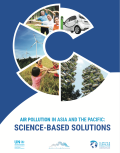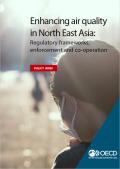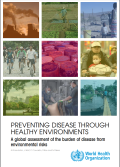
This report identifies 25 clean air measures that can positively impact human health, crop yields, climate change, and socio-economic development as well as contribute to achieving the Sustainable Development Goals (SDGs). Implementing these measures could help 1 billion people breathe cleaner air by 2030 and reduce global warming by a third of a degree Celsius by 2050.
This report links state-of-the-art models on vehicle emissions, air pollution, and epidemiological models to determine how, when, and where transportation emissions are impacting air quality and public health. It advances beyond examining the transportation sector as a whole, evaluating the health burden attributable to specific subsectors: on-road diesel vehicles, on-road non-diesel vehicles, shipping, and non-road mobile sources that include agricultural and construction equipment and rail transportation.
This report is the first-ever comprehensive scientific assessment of the air pollution outlook in the Asia and the Pacific region. It outlines 25 clean air measures that could achieve safe air quality levels for 1 billion people by 2030, with numerous benefits for public health, economic development, and the climate.

The Policy Brief - Enhancing air quality in North East Asia presents the key findings from a joint project of the OECD Environment Policy Committee and the Regulatory Policy Committee focused on regulatory frameworks, enforcement and co-operation to address air pollution.

This report Preventing Disease Through Healthy Environments: A global assessment of the burden of disease from environmental risks presents a wide-ranging assessment and detailed findings to show by how much and in what ways improving the environment can promote health and well-being.
